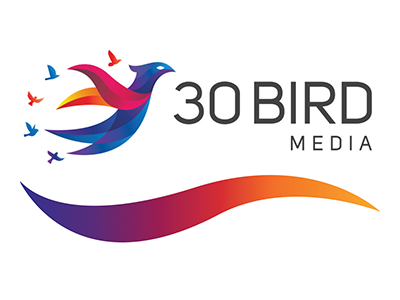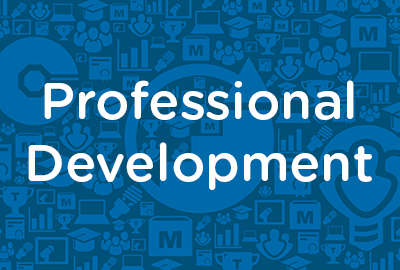 |
Sales Skills: Advanced: Developing a Winning Strategy |
0.50 |
This course will focus on examining consulting strategies and developing solutions for clients. |
 |
Microsoft Excel 2019 Complete |
24.00 |
Excel 2019 Complete provides the concepts and skills to be productive with Microsoft Excel 2019, starting with fundamentals and working up to advanced tools and techniques. This course maps to the objectives of the Microsoft Office Specialist and Expert exams for Excel 2019. Objective coverage is marked throughout the course, and you can download an objective map from 30bird.com.
Students will benefit most from this course if they want to use Excel 2019 to perform real-world tasks, from common workplace tasks to complex operations with large amounts of data. If students intend to take a Microsoft Office Specialist or Expert exam for Excel, this course offers complete coverage of all the objectives for both exams.
The course assumes students know how to use a computer, and that they're familiar with Microsoft Windows. It does not assume that they've used a different version of Excel or another spreadsheet program before. |
 |
Building Relationships with School Personnel |
2.00 |
School-age programs and schools share a mutual goal of supporting the growth, development, and learning of school-age children. Over 50% of all school-age programs nation-wide are housed in school facilities. When school-age programs are housed in school facilities, it is essential for staff in school-age programs to establish and maintain a positive relationship with school personnel. This makes it possible for schools and programs to work together to support the needs of the whole child. Staff can develop successful partnerships with school personnel by cultivating an understanding of the needs, interests, and goals of school personnel and using effective strategies, tools, and systems to build a spirit of positive collaboration and communication. |
 |
Becoming Tech Savvy |
1.50 |
This course was designed to help you learn various tips and tricks to use your devices as efficiently as possible. This includes tech skills, safety & security information, and keyboard and mouse shortcuts. |
 |
Basic Computer Skills |
1.50 |
In this course, you will learn how to get started with your first computer, including learning about files, computer setup and maintenance, and installing software. |
 |
Creating a Supportive Classroom Community (CDA 3) |
2.00 |
Learn ways to bring out nurturing, caring behaviors in children and youth to create a classroom community where children and youth support each other. Learn how to use non-competitive games to foster acceptance of all children and youth. Identify the strengths and weaknesses for both you and the children and youth in your program, and how to put the strengths to good use creating a sense of acceptance and community. This course is designed to be part of a Child Development Associate (CDA) Credential™ curriculum. It covers CDA Subject Area 3: Supporting Children's Social and Emotional Development and may also be taken as a stand-alone learning event or as part of a broader early childhood education curriculum. |
 |
Business Accounting: Stockholders' Equity |
1.50 |
This course will cover how to identify various types of stocks and calculate the value of a corporation’s stock as well as how to use financial ratios to calculate book value and market value per share. You will also learn how to identify the components of stockholders’ equity and report stockholders’ equity on financial statements. |
 |
Remote Learning in a Tiered Behavior Framework |
1.00 |
This course covers implementing strategies for remote learning in a tiered behavior framework. A different setting for learning requires adaptations to instruction, engagement, and response to students. School and family partnerships lay the foundation for supporting students in a Multi-Tiered System of Support (MTSS). |
 |
Infectious Diseases: Causes and Symptoms |
1.00 |
An infectious disease is an illness that is caused by organisms such as bacteria, viruses, fungi, and parasites. Many of these organisms live in or on our bodies, and are normally harmless. But under certain circumstances, they can cause disease.
Course Learning Objectives:
- Describe infectious disease, and the ways in which germs that can cause infectious disease are spread.
- Identify common symptoms of infectious diseases, and why young children are vulnerable to infectious diseases. |
 |
GED: Reasoning Through Language Arts - Unit 8: Post-Test |
0.25 |
Welcome to Unit 8: Post-Test. This post-test covers reading comprehension, writing, and editing. At the end of this post-test is a table that matches each question to the content it covers. Use it to review any content that you haven't mastered. |
 |
Quality Management: Customer Orientation (Instructor Guide) |
0.75 |
Customer orientation is an organizational mindset in which meeting the needs of the customer becomes an organization’s focus. Customer orientation is an important aspect of quality management because it ensures customer satisfaction by integrating the customer’s needs into strategic planning, product development, and product delivery.
There are three components that comprise customer orientation: awareness of the market, communication of market intelligence to the entire organization, and initiatives to make use of the market intelligence.
This Instructor's Edition of this course includes notes and suggestions to assist you in presenting the material, whether in an in-person classroom setting or as an instructor-led online or distance-learning course. It also provides you with the answers to questions found in mid-lesson activities, as well as in the quiz that concludes the course. |
 |
Microsoft PowerPoint - Basic: Getting Started |
0.75 |
This course will focus on how to open a presentation, identify PowerPoint interface components, switch between views, and zoom in and out. |
 |
Microsoft Word - Basic: Getting Started |
1.25 |
This course will focus on how to use the elements of the Word window, create and save documents, and navigate a document and select text by using the keyboard and the mouse. |
 |
Career Experiences |
2.00 |
In this course, you will hear firsthand accounts of the professional experiences of others, as well as advice for dealing with failure and tips for pursuing happiness in the workplace. |
 |
Innovative Learning for Modern Educators |
1.50 |
This course is designed to empower educators with the knowledge, skills, and tools necessary to seamlessly integrate innovative learning strategies into their classrooms. It is just one out of many educational professional courses we offer. Educators will develop the expertise to elevate student engagement, retention, and outcomes, surpassing the limitations of traditional teaching methods. Tailored to inspire, challenge, and guide, this course is a transformative journey for educators, equipping them to create enriched and dynamic learning experiences. |
 |
Construction Safety & Prevention Program: OSHA Inspections |
0.50 |
This course covers the process of OSHA inspections, the penalties incurred when a workplace does not satisfy OSHA standards, and how to properly respond to an OSHA inspection. |
 |
Helping Children with ADD Succeed In School-Age Programs: Characteristics and Needs of Children |
1.00 |
Children with ADD regularly experience struggles and challenges at home, in school, and in the community. Without the help of knowledgeable, understanding, and supportive people, they often experience multiple failures and frustrations on a daily basis. In this course, we will explore characteristics and needs of children with ADD. |
 |
GED: Social Studies - Unit 5: Post-Test |
0.25 |
Welcome to Unit 5: Post-Test. This post-test covers civics and government, US history, economics, and world geography. At the end of this post-test is a table that matches each test question to the content it covers. Use it to review and content you haven't mastered. |
 |
Cross-Cultural Business Communication: Addressing Cross-Cultural Issues (Instructor Guide) |
1.00 |
When communicating with coworkers, it is very important to respect other cultures. You should refrain from using humor that might offend people from other cultures, and avoid stereotypes that might affect how you treat your coworkers.
Before communicating with employees who belong to a different culture, it is important to research their cultures and understand clearly what is expected from your communication. You should determine what types of communication are most appropriate in specific situations. For example, you should investigate the most appropriate method for communicating a behavioral problem to an employee. Some cultures prefer profuse praise to cushion the constructive feedback, while others prefer a more direct approach. The most important thing to communicate to employees of different cultures is respect. By approaching them in accordance with their cultural standards and expectations, you’ll show respect for their cultures and your communication will be enhanced.
In this course you will learn to: identify gestures used in different cultures and build a cross-cultural team, and discuss guidelines for writing cross-cultural documents and assembling a translation team.
This Instructor's Edition of this course includes notes and suggestions to assist you in presenting the material, whether in an in-person classroom setting, or as an instructor-led online or distance-learning course. It also provides you with the answers to questions found in mid-lesson activities, as well as in the quiz that concludes the course. |
 |
Searching Online |
0.75 |
This course covers the fundamentals of searching online. From using basic features, such as the homepage and address bar, to using "advanced search" to find very specific information, this course will cover it all. |
 |
Use Information Correctly |
0.75 |
This course covers the basics of using online information. We will go over copyrights, Creative Commons, and public domain work, as well as the rules associated with using these forms of media. |
 |
Family-Teacher Relationships (CDA 4) |
2.00 |
How do you view the families of the children in your classroom? If you were to generate a list of words to describe families, what kinds of positive and negative feelings would they convey?
When we see ourselves as partners with the families we serve, the quality of care and nurturing children receive is greatly enhanced. Establishing such partnerships and building relationships is our responsibility. Communication strategies, such as practicing active listening, are key to this process. In this course, participants will describe the importance and benefits of establishing meaningful relationships with families and identify strategies for establishing meaningful relationships.
This course is designed to be part of a Child Development Associate (CDA) Credential™ curriculum. It covers CDA Subject Area 4: Strategies to Establish Productive Relationships with Families. This course can also be taken as a stand-alone learning event, or as part of a broader early childhood education curriculum. |
 |
Conducting Meetings: Communicating Nonverbally (Instructor Guide) |
0.50 |
Individuals are always sending messages, unconsciously or consciously, through nonverbal communication. When verbal and nonverbal communication contradicts one another, nonverbal cues are usually believed. Therefore, it is important that you understand what different types of nonverbal communication can mean, and how these messages can influence the productivity of your meetings.
Learning Objectives: Identify the different ways nonverbal messages can be sent. Interpret nonverbal communication and identify the steps to improve nonverbal communication.
This Instructor's Edition of this course includes notes and suggestions to assist you in presenting the material, whether in an in-person classroom setting, or as an instructor-led online or distance-learning course. It also provides you with the answers to questions found in mid-lesson activities, as well as in the quiz that concludes the course. |
 |
Managerial Leadership: Employing Motivational Strategies |
0.50 |
You need to use motivational strategies in your leadership to help your employees perform optimally, and to make them feel as though they are helping meet a need. When you motivate your employees to accomplish their goals, and give them the necessary feedback to optimize their performance, they feel they are helping meet the organization’s needs.
You, your employees, and your organization all benefit when you use motivation in leadership. You benefit because, through motivation, your work group will perform optimally. Your employees benefit because they experience job satisfaction and success in accomplishing their goals. Your organization benefits because its members are more committed to helping it be successful and grow.
In this course you will learn to: motivate employees and overcome employee apathy. |
 |
Providing Homework Support: Types of Homework Support |
1.00 |
Research indicates there are many different ways to provide effective homework support in school-age programs. When planning a homework support program, it is important for school-age programs to develop a homework philosophy that is consistent with the program’s overall philosophy, and reflects current research on best practices for providing homework help. The homework philosophy should also reflect the needs of parents and children in the program, and strike a balance between homework needs and other experiences that help children grow and learn out-of-school. In this course, we will explore the various types of homework support. |


























